Guest Blogger: Linda Acaster
The winner of Linda's book is: Julia Rachel Barrett. Congratulations, Julia! Send me your contact info and I'll pass it along to Linda. Thanks to everyone who participated.

What are we doing when we toss a coin into a fountain in the middle of a noisy shopping mall? Making a wish? Trying to change our luck? How does this work in our cynical rush-rush world of the 21st century?
The simple answer is that it doesn’t. What we are subconsciously doing is enacting a rite at least 3,000 years old, invoking the female deity of the pool to remain benign and keep producing life-giving, drinkable, water.
Here in the British Isles, long before the introduction of coinage, items of wealth were being cast into sacred pools: exquisitely decorated swords, helmets, dishes and torcs – the twisted gold neck-rings that were the emblem of authority in Celtic Britain – sacrificed on behalf of the extended family, or people of the tribe.
wealth were being cast into sacred pools: exquisitely decorated swords, helmets, dishes and torcs – the twisted gold neck-rings that were the emblem of authority in Celtic Britain – sacrificed on behalf of the extended family, or people of the tribe.
The larger, tribal sacrifices tended to be clustered around the year-end festival of Samhain, when the crops were in, the land was dying back for winter, and it was believed that the barrier between this world and the Otherworld was thin enough to allow the dead, and Otherworld beings, to impart wisdom to the living. When Christianity sought to extend its influence, the churches built on known sites of these divination rites were not named for individual saints, but for All Hallows, or All Saints & All Souls, so that their annual celebrations would eventually obliterate the pre-Christi an rites which had taken place there at the time of year we now know as Halloween.
an rites which had taken place there at the time of year we now know as Halloween.
But not every site was obliterated by a Christian church, though many springs were made into Christian pilgrimage sites, their waters often attributed with medicinal qualities, and nearly always presided over by the Virgin Mary – Christianity’s female deity.
Springs in smaller communities became first the village pond, usually with a church close by, or eventually the village pump. But not all. Close to where I live in East Yorkshire a boggy field was excavated on the hearsay of the oldest residents remembering tales from their grandparents. Beneath the silt a stone well-housing was uncovered, its spring still producing clear, drinkable water. A picture-book roofed cover has been erected over it, and a thorn hedge planted nearby in recognition that this was once a rag well, where maidens ventured late on midsummer’s night to circle the spring while reciting a charm in the hope of seeing the face of their husbands-to-be.
Not all springs have been rendered quaint. On the North York Moors, near the village of Stape, is what is now referred to as Old Wives Well. The moor would have been a treeless place when the Sixth Legion Victrix laid a Roman road beside it, but the road has long returned to nature, and Britain’s modern Forestry Commission has covered the surrounding land in quick-growing pine – except that the glade surrounding the moss-covered well-housing is all deciduous woodland of birch and alder, ancient species native to these islands. Hanging in their thin branches are offerings of ribbon, charms and tiny bells, augmenting the coins pressed into the moss shrouding the well-housing.
The glade is hidden from the modern road, only findable with an Ordnance Survey map. It’s a place for contemplation, for drinking in the quiet and the myriad tones of green. Which begs the question… does a religion remain potent as long as one person believes, as long as one person cares enough to invoke its spirit?
This was my starting point for Torc of Moonlight, a paranormal thriller set in the verdant university campus of my home city of Hull, with its museum of Celtic reconstructions and excavated Romano-British mosaics. Alice is obsessed with uncovering the shrine to a forgotten Celtic water goddess she believes lies on the Moor close to the Roman road. Nick is obsessed with her, and keeps rationalising the disturbing changes in himself until his dual personality splits away and he realises that his sports training regime is not to hone his rugby skills.
Torc of Moonlight explores belief and betrayal across history and carries a triple storyline, including a Celtic why-dunnit. It’s the first in a trilogy set in university cities surrounding the North York Moors. Visit http://www.lindaacaster.com/ to read an opening extract and the growing reviews under its blog, and http://lindaacaster.blogspot.com/ for up to the moment info.
The paperback is available from Amazon, with the Kindle version coming soon. There is also ePub format from Book2Book, and PDF format from Linda’s blog.
The simple answer is that it doesn’t. What we are subconsciously doing is enacting a rite at least 3,000 years old, invoking the female deity of the pool to remain benign and keep producing life-giving, drinkable, water.
Here in the British Isles, long before the introduction of coinage, items of
 wealth were being cast into sacred pools: exquisitely decorated swords, helmets, dishes and torcs – the twisted gold neck-rings that were the emblem of authority in Celtic Britain – sacrificed on behalf of the extended family, or people of the tribe.
wealth were being cast into sacred pools: exquisitely decorated swords, helmets, dishes and torcs – the twisted gold neck-rings that were the emblem of authority in Celtic Britain – sacrificed on behalf of the extended family, or people of the tribe.The larger, tribal sacrifices tended to be clustered around the year-end festival of Samhain, when the crops were in, the land was dying back for winter, and it was believed that the barrier between this world and the Otherworld was thin enough to allow the dead, and Otherworld beings, to impart wisdom to the living. When Christianity sought to extend its influence, the churches built on known sites of these divination rites were not named for individual saints, but for All Hallows, or All Saints & All Souls, so that their annual celebrations would eventually obliterate the pre-Christi
 an rites which had taken place there at the time of year we now know as Halloween.
an rites which had taken place there at the time of year we now know as Halloween.But not every site was obliterated by a Christian church, though many springs were made into Christian pilgrimage sites, their waters often attributed with medicinal qualities, and nearly always presided over by the Virgin Mary – Christianity’s female deity.
Springs in smaller communities became first the village pond, usually with a church close by, or eventually the village pump. But not all. Close to where I live in East Yorkshire a boggy field was excavated on the hearsay of the oldest residents remembering tales from their grandparents. Beneath the silt a stone well-housing was uncovered, its spring still producing clear, drinkable water. A picture-book roofed cover has been erected over it, and a thorn hedge planted nearby in recognition that this was once a rag well, where maidens ventured late on midsummer’s night to circle the spring while reciting a charm in the hope of seeing the face of their husbands-to-be.
Not all springs have been rendered quaint. On the North York Moors, near the village of Stape, is what is now referred to as Old Wives Well. The moor would have been a treeless place when the Sixth Legion Victrix laid a Roman road beside it, but the road has long returned to nature, and Britain’s modern Forestry Commission has covered the surrounding land in quick-growing pine – except that the glade surrounding the moss-covered well-housing is all deciduous woodland of birch and alder, ancient species native to these islands. Hanging in their thin branches are offerings of ribbon, charms and tiny bells, augmenting the coins pressed into the moss shrouding the well-housing.
The glade is hidden from the modern road, only findable with an Ordnance Survey map. It’s a place for contemplation, for drinking in the quiet and the myriad tones of green. Which begs the question… does a religion remain potent as long as one person believes, as long as one person cares enough to invoke its spirit?
This was my starting point for Torc of Moonlight, a paranormal thriller set in the verdant university campus of my home city of Hull, with its museum of Celtic reconstructions and excavated Romano-British mosaics. Alice is obsessed with uncovering the shrine to a forgotten Celtic water goddess she believes lies on the Moor close to the Roman road. Nick is obsessed with her, and keeps rationalising the disturbing changes in himself until his dual personality splits away and he realises that his sports training regime is not to hone his rugby skills.
Torc of Moonlight explores belief and betrayal across history and carries a triple storyline, including a Celtic why-dunnit. It’s the first in a trilogy set in university cities surrounding the North York Moors. Visit http://www.lindaacaster.com/ to read an opening extract and the growing reviews under its blog, and http://lindaacaster.blogspot.com/ for up to the moment info.
The paperback is available from Amazon, with the Kindle version coming soon. There is also ePub format from Book2Book, and PDF format from Linda’s blog.
**********
Linda will be giving away a copy of her book to one commenter. The winner will be selected and posted on Tuesday evening. Stop back by to see if you won.






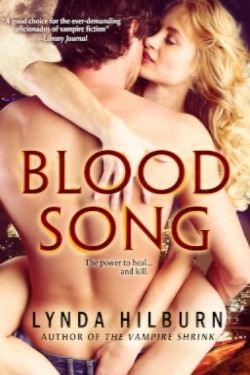
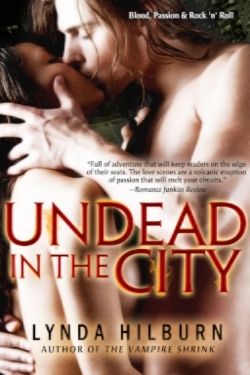
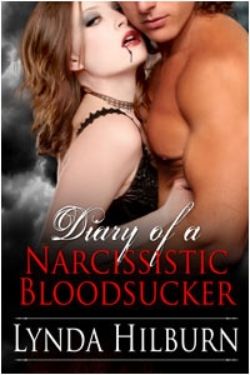

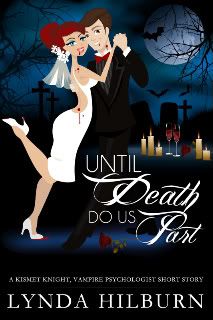

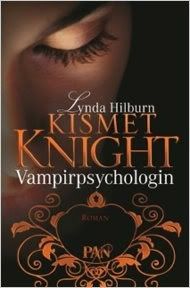







18 Comments:
Wow, Cool picture !
And Paranormal books always make me Hooked !
i'd love to read this book !
uniquas at ymail dot com
This is a fantastic post!! Way to sell a book!!! Can I get this on Amazon??? Thanks.
Hello already! The post is up earlier than expected and has taken me by surprise. Thanks for dropping by.
Print copies are available on Amazon.com. There's only two reviews on the USA site at the moment, but if you pull up Amazon.co.uk you'll see around ten. Visit either www.lindaacaster.com or http://lindaacaster.blogspot.com and you'll be able to read the *wonderful* print review I got from the Students' Union mag of Hull's university.
Any other questions, just ask. Great to hear from you all!
Forgot to mention, as my publisher can't get its act together properly there is no system to read a few taster pages on Amazon, but there is on my website. Enjoy.
I love paranormal books, they are always my first choice. That cover is really something, very beautiful. I really like listening to Celtic music as well and think reading this book while listening to Celtic music would be an awesome way to get right into it.
Wow this book looks really fantastic, I hope I win it so I can get a chance to read it!
kpic724 (at) gmail (dot) com
Seems interesting..a little bit different from the other books I've been reading but in a good way.
magabygc AT gmail DOT com
Mary: Well, I don't know about reading it while listening to Celtic music - it is a thriller, after all, and all the Celtic music I have is to relax to. Ho ho!
Gaby: A bit different..? I'll admit to it being quite different to the books I come across on most paranormal sites. For a start, it's a triple-three, Celtic style: there is are three interwoven storylines - a Celtic whydunnit colours the modern storylines and kicks the whole thing off - and 'Torc of Moonlight' is the first of a trilogy carrying the main story thread forward into another triple storyline, in the second of the university cities which surround the North York Moors.
Ahem... did you follow all that? Sorry, I got carried away.
Love historical trivia, especially British historical trivia. I visited several sites in Scotland and the Outer Hebrides where women hoping to find a mate tied strings or rags around the pool. Fascinating!
Great article, Linda! I love the history and the ancient pagan history - utterly fascinating!
I love the way you blend the paranormal and ancient and modern elements in TORC OF MOONLIGHT - made the hairs on the back of my neck stand on end!
Hi Linda
Always great to meet another UK author, especially one who writes abot the paranormal and Celtic rituals and legends.
I'm Welsh, so of course anything Celtic immediately sparks my interest, and I really want to read Torc Of Moonlight after learning about the place that gave you inspiration for it.
Fascinating post, thanks.
Lyn@ hywelalyn.co.uk
Hi everyone, been off-line for a while getting this PDF ebook ready for one of you. And very professional it looks, even if I say so myself. Good enough to put up on my site. Gosh, the skills you have to learn when you're a writer.
Thanks for all the comments. And Hywela is Welsh! The world is not so big after all. You are probably only a four hour drive away.
Does everyone use a good dose of their own locality in their novels? Or, if you are a reader, do you get excited when your home locale is used as a setting - or do you go round picking up the slips? I have to admit that it's the first time I've done so.
In the UK, publishers like novels that can be tagged to a specific area, particularly in the women's fiction and crime genres. Not that I'm writing either, but there we go...
This was a great post!! I'd love to win the book. It's definitely on my list of tbr's.
Always wondered about the reason behind the coins. Your story sounds intriguing.
Very interesting post and your book sounds great!
loved the pictures and the history. As someone who works for a water company, I'll make sure to toss in a few coins whenever I find a fountain. Job security, LOL.
Your book sounds like a great read.
This was a very interesting post. Thanks for the history and photos of Yorkshire. Your book sounds intriguing. I'll look forward to reading it.
Thanks, everyone, for dropping by. The coins... preferably silver, like the moon.
The idea behind it all, as far as can be reckoned, is that the main divination rites were undertaken at the Celtic year-end, which remained the farming year-end in the UK until WW1, so festivals of one kind or another were still being held end Oct/beg Nov, particularly hiring fairs.
The year-end was phased to the moon, and the belief was that if the Otherworld auspices were good the weather would be favourable, thus a cloudless night would allow the full moon to be seen. When the moon was above participants and also appeared in the pool, it meant that the two worlds were synchronized and divination could take place.
Most of this is conjecture, of course, based on other cultures' beliefs, but it has enough of a whiff of truth for fiction.
Post a Comment
<< Home